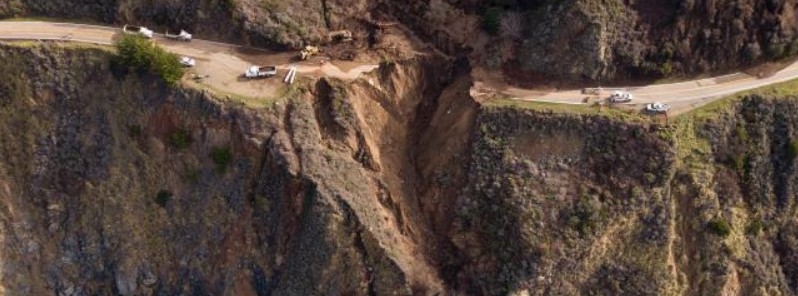Major storm leaves 2 dead, takes out massive chunk of Highway 1 in California, U.S.

Massive storms that barrelled through Northern California over the weekend brought heavy rains and snow, causing floods and landslides and leaving at least 2 people dead. Meanwhile, a front approaching the Northwest will move onshore on Monday, February 1, and advance eastward to Southern California by Wednesday, February 3, producing rain and high elevation snow over parts of the northern region.
The atmospheric river-driven storms hit Northern California on Thursday, January 28, unleashing damaging mudslides, widespread flooding, and heavy snow, which led to the evacuation of thousands of residents.
At least two people were killed in the storms' onslaught. On Thursday, a skier's body was retrieved in deep snow near a chairlift and intersecting trails at Mammoth Mountain in the Sierra Nevada.
On Friday afternoon, January 29, seven people were trapped in an inundated drain system near a Mexican border crossing, one of them was confirmed dead. On the same day, governor Gavin Newsom issued an emergency proclamation for the counties of Monterey and San Luis Obispo.
Due to heavy rains, a portion of the iconic Highway 1 collapsed into the ocean on Friday. In a video posted by the Monterey County Sheriff's Office, a large part of the highway was still covered with debris from mudslides.
At the point of the collapse, both lanes of the road completely disappeared, with a huge hole sloping toward the Pacific Ocean in its place.
According to the San Francisco Chronicle, upstream of the washout site is a large area burnt by wildfires, particularly by the Dolan Fire, which scorched an area of about 52 000 ha (128 500 acres) from August 18, 2020.
"Rat Creek drains an area partially burnt by the fire," Dr. Dave Petley of The Landslide Blog said in an analysis. "The images of the aftermath of the washout show large volumes of timber, which would be as expected for a post-wildfire mudflow," he wrote.
"Of course the amount of overland flow generated in wildfire areas means that the gully will have dealt with a larger than normal volume of flow, with a higher density, generating the unusual level of erosion. The roadbed was on erodible material, possibly weathered rock and some fill."




Meanwhile, a front approaching the Northwest is forecast to move onshore later on Monday, then advance eastward to the Northern Intermountain Region/Northern Rockies to Southern California by Wednesday.
The system will bring rain and some high elevation snow over parts of the Pacific Northwest and parts of Northern California, according to the National Weather Service (NWS).
"When the front moves onshore overnight Monday, the snow levels will lower over the region as rain moves into Central California. On Tuesday afternoon, snow returns to California's higher elevations and into parts of the Northern Intermountain Region by Tuesday evening. By Wednesday morning, the snow will move into parts of the Northern Rockies."
Featured image credit: ChinaNews

Commenting rules and guidelines
We value the thoughts and opinions of our readers and welcome healthy discussions on our website. In order to maintain a respectful and positive community, we ask that all commenters follow these rules.